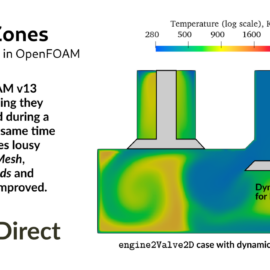In June 2025, Henry Weller at CFD Direct completed a rewrite of mesh zones and associated tools, released in OpenFOAM v13 by The OpenFOAM Foundation. The aim behind the rewrite of mesh zones was to make them dynamic, so they would work effectively for complex CFD problems, especially involving moving meshes. The new design includes createZones which provides a simpler, more powerful replacement for the lousy topoSet. Other utilities which have been rewritten, and are far better to use as a result, include setFields, refineMesh (making the separate refineHexMesh redundant), createPatch and subsetMesh.
The Best OpenFOAM is v13
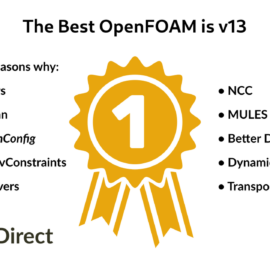
OpenFOAM v13, produced by CFD Direct and released via The OpenFOAM Foundation, is the best version of OpenFOAM today. By “ best” we mean the software which best meets the critical needs of users — availability, usability, robustness and extensibility. It is redesign work that has greatest impact on these criteria and which CFD Direct has provided time and again, delivering new, improved software components. Examples include modular solvers, NCC, field-Lagrangian, bounded MULES, dynamic zones, improved dynamic meshes, snappyHexMeshConfig, fvModels and fvConstraints, liquid film modular solver and dedicated transport libraries.
MULES in OpenFOAM in 2025
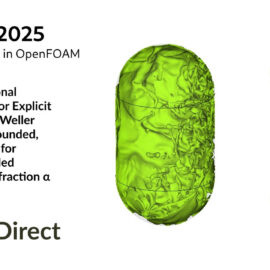
In February 2025, there were significant improvements to MULES in the development line of OpenFOAM which make it extremely robust, easier to use, and quicker to run. The changes include: improvements to the iterative MULES algorithm to guarantee boundedness of solutions; a new control structure for the MULES parameters; an optional tolerance for limiter convergence for semi-implicit MULES; better control for sub-cycling the α-equation based on setting a function of the α-Courant number.
Field-Based Lagrangian
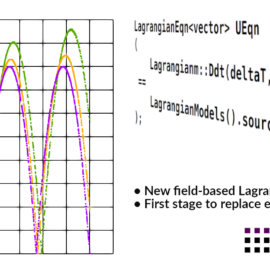
This article is a user guide to the new field-based Lagrangian functionality in OpenFOAM. This is a new implementation of Lagrangian functionality where data is stored as fields rather than in the objects representing particles or parcels (particle-based Lagrangian). It will ultimately replace the original particle-based Lagrangian and is 65% complete and available in OpenFOAM-dev. Field-based Lagrangian has the advantages of: better extensibility, since fields can be simply added; greater efficiency of fewer function calls using field algebra; greater code reuse due to consistency with the rest of OpenFOAM.
IC Engines in OpenFOAM
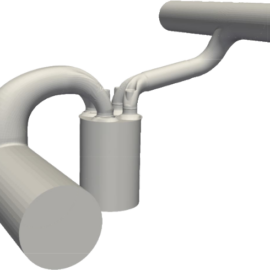
March 2024: CFD Direct is pleased to announce that OpenFOAM can simulate internal combustion (IC) engines including piston and valve motion. The capability was produced in collaboration with Wärtsilä, Finland and partner organisations, starting in October 2021. It is publicly available from The OpenFOAM Foundation in the development line of OpenFOAM (OpenFOAM-dev, packaged here), with example cases in the ICengines repository. Wärtsilä plan to release new features in the ICengines repository in August each year, following each new version release of OpenFOAM in July.
Liquid Films in OpenFOAM
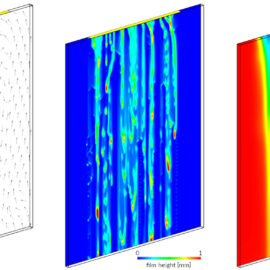
CFD Direct have completely replaced the liquid film functionality in OpenFOAM. The new film functionality conserves mass, unlike its predecessor which was non-conservative and consequently inaccurate and unreliable for many problems. It is implemented with the solver module framework, which enables coupling to other regions with gas flows, multiphase flows, particle clouds, solids etc, including calculations of conjugate heat transfer (CHT). As such, it is consistent with the rest of OpenFOAM so can use all the existing sub-modelling, e.g. thermodynamics, transport, etc. The new implementation contains 50% of the code lines of the original one, despite being more functional. It is therefore cheaper and easier to maintain, while being more extensible and robust.

